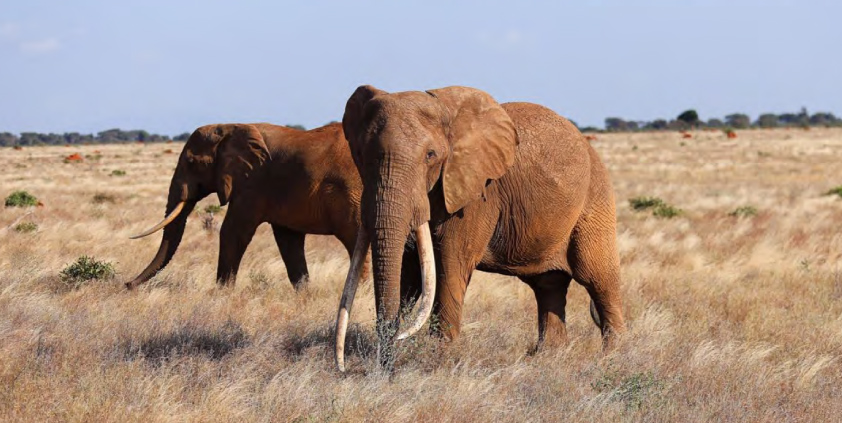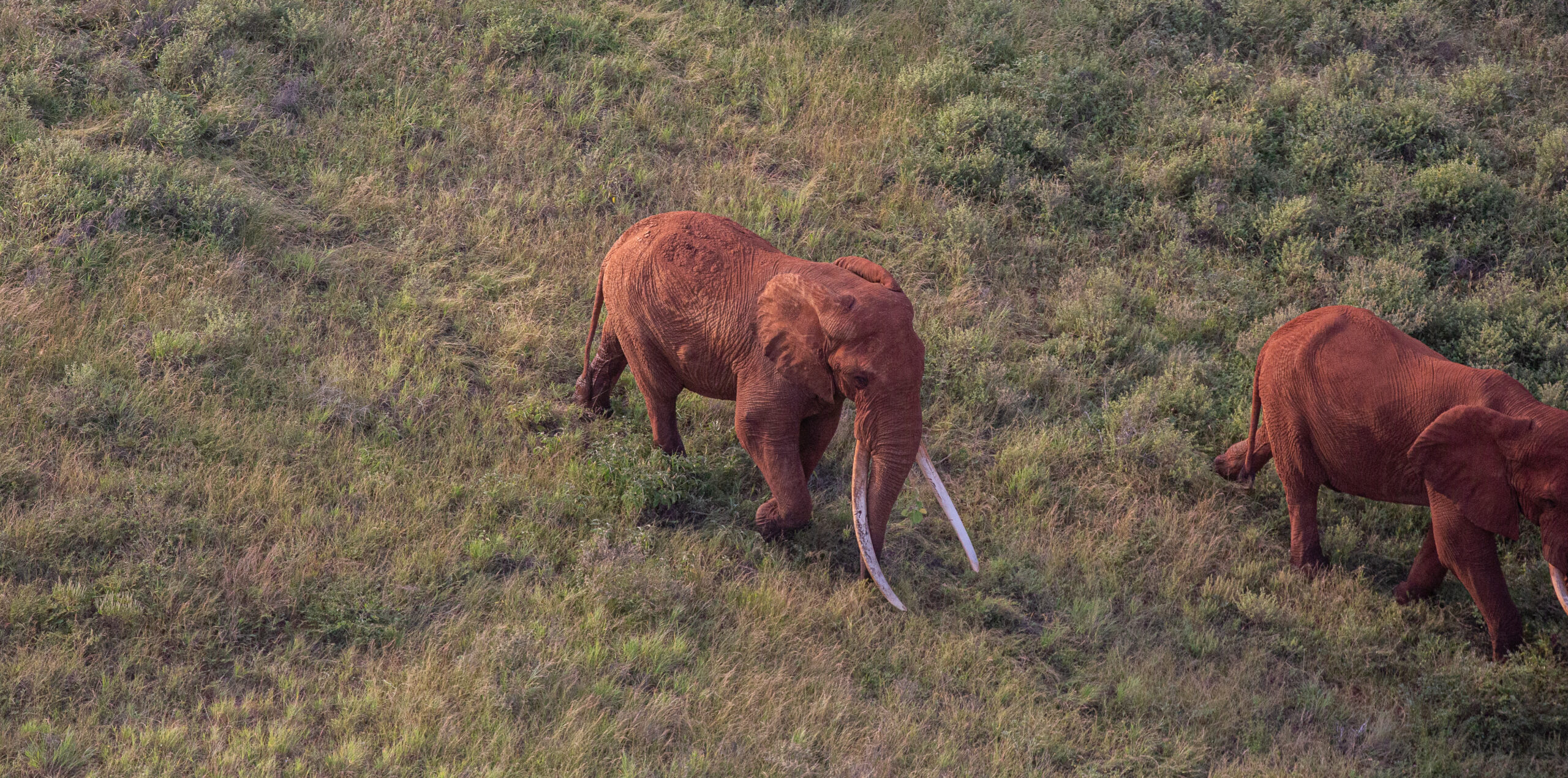Every year on World Elephant Day (12th August 2025), we take a moment to celebrate the world’s largest land mammal. Elephants are powerful and intelligent, emotional and empathetic. They’re ecosystem engineers, cultural icons, and an irreplaceable part of Africa’s wild identity.
At Tsavo Trust, we work every day to protect these giants—not only because of what they mean to us, but because of what they mean to the health of the ecosystems they shape.
This year, we’re reflecting on some of the most fascinating things we’ve learned about elephants, what makes Tsavo’s elephant population so unique, and why protecting them has never been more important.
What makes elephants so extraordinary?
Elephants are more than just majestic creatures. In the past year alone, new research and observations have helped deepen our understanding of their behaviour, intelligence, and impact on the environment.
We’ve deepened our understanding of elephant culture—how the wisdom of matriarchs is vital for herd survival, and even how elephant mothers sometimes fake oestrus to teach their young daughters the nuances of courtship and mating. We’ve seen evidence that elephants may give each other personal names, and we’ve explored how strong social bonds can directly influence an individual’s chances of survival.
Our curiosity has also led us deeper into elephant anatomy, uncovering lesser-known features like the pharyngeal pouch, a built-in reservoir that allows elephants to store water and spray it on themselves later. We’ve explored their remarkable sense of smell, with studies suggesting that elephants can even distinguish between different Kenyan tribes.
Most importantly, we’ve been reminded that elephants are keystone species—animals whose presence helps define entire landscapes. From digging for water in dry riverbeds to dispersing seeds through their dung, elephants shape Tsavo’s ecology in a way few other species can.
Read more on elephants as keystone species →
What we’ve learned about elephant conservation
Over the past year, several key themes have emerged in the world of elephant conservation:
-
Community involvement is essential. Conservation that works long-term must involve and benefit the people who share the land with elephants. We’ve written extensively about this at Tsavo Trust, especially in how we collaborate with Kamungi Conservancy and surrounding communities.
Why conservation needs community → -
Funding matters. A recent continent-wide study confirmed what we see every day: protected areas with adequate funding and strong governance have more stable elephant populations. The takeaway is clear—where there is support, elephants can thrive.
What makes elephant conservation truly effective → -
Modern technology is a critical tool. GPS collars, real-time tracking, and integrated systems like EarthRanger help conservation teams stay informed, react quickly, and work closely with partners like Kenya Wildlife Service to protect elephants across vast landscapes.
Why it’s important to continue conservation
While some elephant populations are stable or growing, many others across Africa remain in decline. In areas without strong protection, poaching and habitat loss continue to take a toll.
Meanwhile, Africa’s human population is rising rapidly, putting more pressure on land and increasing the risk of human–elephant conflict. Conflict over crops, fences, and water can escalate quickly and with devastating consequences—for both people and elephants.
And with climate change adding new stressors, such as shifting rainfall, prolonged droughts, and habitat degradation, it is vital that elephants continue to thrive across a wide range of ecosystems. A future with healthy elephant populations depends on keeping that diversity and resilience intact.
The elephants of Tsavo: Unique giants of Kenya
The Tsavo Conservation Area is home to over 17,000 elephants, making it the largest elephant population in Kenya. These elephants are rugged and iconic, shaped by the dry terrain, red soil, and vast wilderness of Tsavo.
Among them are the world’s rarest elephants: the Super Tuskers—individuals whose tusks each weigh over 45kg and touch the ground. Fewer than 25 of these giants remain across Africa, and Tsavo is home to more than half of them.
Meet the Super Tuskers →
We’re also identifying a new generation of emerging tuskers—young bulls showing the genetic potential to become Super Tuskers in the future. Protecting them is protecting the next chapter of Africa’s elephant legacy.
Learn about emerging tuskers →

What Tsavo Trust has done this year
In 2024, Tsavo Trust continued to build on its core conservation pillars:
-
Aerial patrols logged tens of thousands of kilometers across the ecosystem, providing rapid response to threats.
-
Elephant collaring allowed us to track movement and mitigate conflict before it happened.
-
EarthRanger tracking systems enabled real-time data sharing with KWS and other conservation partners.
-
Community outreach expanded, particularly in education, technology, and local livelihoods.
You can explore our full 2024 Year in Review here:
Tsavo Trust’s impact in 2024 →

Hope for the future
Despite the challenges, there is hope.
New technologies are making conservation smarter. Community-driven models are gaining ground. And a growing number of people around the world are recognizing that elephant conservation is not just about saving wildlife—it’s about protecting ecosystems, supporting livelihoods, and preserving Africa’s natural heritage.
On this World Elephant Day, we celebrate the elephants of Tsavo, the communities who live alongside them, and everyone who supports our mission.
Help us protect Tsavo’s elephants.
Support our work.


